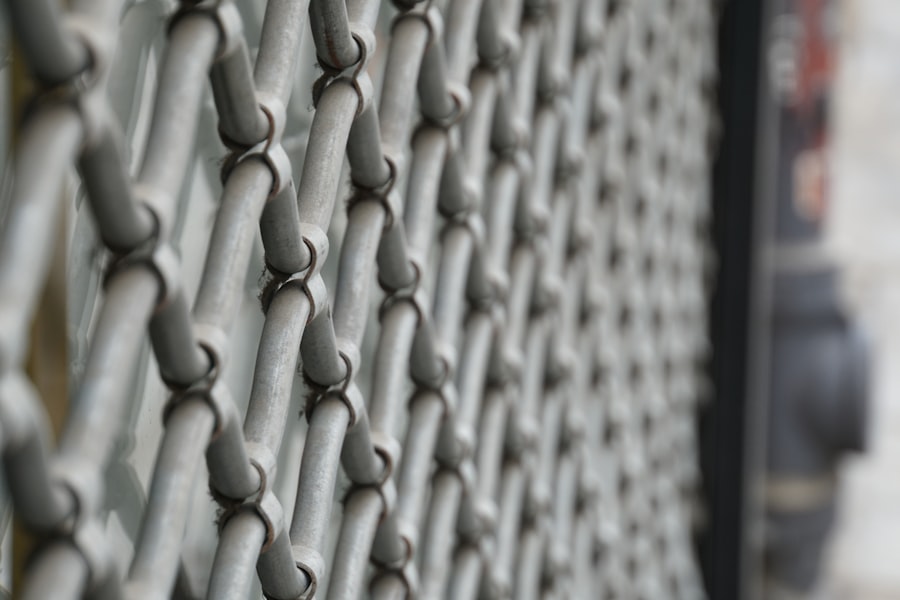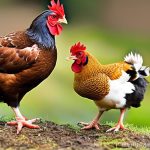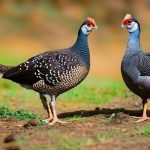Chickens are generally resilient animals, but they can be susceptible to the effects of strong winds. Prolonged exposure to wind can cause stress and discomfort in chickens. There is also a risk of physical harm from wind-blown debris or objects.
Wind can disrupt normal chicken behavior, potentially leading to reduced egg production and appetite. It is essential for chicken owners to be aware of these risks to implement appropriate protective measures. Wind can also negatively impact the chickens’ living environment.
It may blow away bedding material, scatter feed, and potentially damage coops and fencing. These effects can create unsafe and uncomfortable conditions for the chickens, potentially leading to stress and health issues. Understanding these risks is crucial for chicken owners to effectively mitigate the impact of windy weather on their flock.
Table of Contents
- 1 Providing shelter and protection from strong winds
- 2 Securing coop and fencing to prevent damage
- 3 Monitoring and reinforcing structures during windy weather
- 4 Ensuring access to food and water during windy conditions
- 5 Creating windbreaks and barriers in the chicken area
- 6 Keeping an eye on chicken behavior and health during windy periods
- 7 FAQs
Key Takeaways
- Strong winds can pose serious risks to chickens, including stress, injury, and even death.
- Providing adequate shelter and protection from strong winds is crucial for the well-being of chickens.
- Coops and fencing should be secured to prevent damage and potential harm to the chickens during windy weather.
- Regular monitoring and reinforcement of structures is necessary to ensure the safety of chickens during windy conditions.
- Access to food and water should be ensured for chickens even during windy weather to maintain their health and well-being.
Providing shelter and protection from strong winds
Providing Adequate Shelter
One of the most crucial steps in safeguarding chickens from wind risks is to provide them with adequate shelter. This involves ensuring that the coop is well-built and secure, with no gaps or weak spots where wind can enter. Additionally, it’s essential to provide windbreaks within the chicken run or yard, such as planting shrubs or trees, or installing solid fencing to block the wind.
Protecting Chickens from Direct Wind Effects
In addition to providing shelter, it’s also vital to protect the chickens themselves from the direct effects of wind. This can be achieved by providing them with access to areas that are shielded from the wind, such as covered areas within the chicken run or yard.
Additional Measures for Windy Weather
It’s also a good idea to provide the chickens with additional bedding during windy weather to help keep them warm and comfortable. By taking these steps, chicken owners can help minimize the impact of strong winds on their flock and create a safer and more comfortable living environment for their chickens.
Securing coop and fencing to prevent damage

Strong winds can pose a significant risk to the structural integrity of the coop and fencing in a chicken yard. It’s important for chicken owners to take steps to secure these structures to prevent damage during windy weather. This can include reinforcing the coop and fencing with additional supports or anchors, as well as regularly inspecting them for any signs of wear or weakness.
Additionally, it’s important to ensure that any loose objects or debris in the chicken yard are secured or removed to prevent them from being blown into the coop or fencing and causing damage. Furthermore, it’s important to ensure that the coop and fencing are well-maintained and in good condition to begin with. This means regularly inspecting them for any signs of wear or damage, and making any necessary repairs or replacements as soon as possible.
By taking these proactive measures, chicken owners can help minimize the risk of damage to their coop and fencing during windy weather, creating a safer and more secure living environment for their flock.
Monitoring and reinforcing structures during windy weather
During periods of windy weather, it’s important for chicken owners to closely monitor the condition of their coop and fencing to ensure that they remain secure. This can include checking for any signs of damage or weakness, such as loose panels or roofing, and making any necessary repairs or reinforcements as soon as possible. Additionally, it’s important to regularly inspect the chicken yard for any signs of debris or objects that could pose a risk to the chickens or their living environment.
In addition to monitoring and reinforcing structures, it’s also important to take steps to protect the chickens themselves during windy weather. This can include providing them with additional bedding or shelter within the coop or run, as well as ensuring that they have access to food and water that is not being blown away or contaminated by the wind. By taking these proactive measures, chicken owners can help minimize the impact of windy weather on their flock and create a safer and more comfortable living environment for their chickens.
Ensuring access to food and water during windy conditions
During windy weather, it’s important for chicken owners to ensure that their flock has access to an adequate supply of food and water. Strong winds can blow away feed and water containers, making it difficult for chickens to access these essential resources. It’s important for chicken owners to take steps to secure feeders and waterers so that they remain in place during windy weather, such as using heavy-duty containers or securing them to a stable structure.
Additionally, it’s important to regularly check on the feed and water supply during windy weather to ensure that it hasn’t been contaminated by debris or blown away. If necessary, additional feed and water should be provided to ensure that the chickens have an adequate supply during periods of windy weather. By taking these proactive measures, chicken owners can help ensure that their flock has access to essential resources during windy conditions, minimizing the impact on their health and well-being.
Creating windbreaks and barriers in the chicken area

Creating Physical Barriers
Creating windbreaks and barriers within the chicken area can help protect the flock from the direct effects of strong winds. This can include planting shrubs or trees around the perimeter of the chicken yard, as well as installing solid fencing or barriers to block the wind. Additionally, providing covered areas within the chicken run or yard can give the chickens a place to seek refuge from the wind.
Optimizing the Layout of the Chicken Area
In addition to creating physical barriers, it’s also important to consider the layout of the chicken area in relation to prevailing wind patterns. By positioning structures such as coops and shelters in a way that minimizes exposure to strong winds, chicken owners can help create a more protected living environment for their flock.
Minimizing the Impact of Windy Weather
By taking these proactive measures, chicken owners can help minimize the impact of windy weather on their flock and create a safer and more comfortable living environment for their chickens.
Keeping an eye on chicken behavior and health during windy periods
During periods of windy weather, it’s important for chicken owners to closely monitor the behavior and health of their flock. Strong winds can cause stress and discomfort for chickens, leading to changes in behavior such as agitation or reduced egg production. Additionally, windy weather can also pose a risk of physical harm to chickens if they are exposed to flying debris or objects.
By keeping a close eye on their flock during windy periods, chicken owners can quickly identify any signs of distress or health issues and take appropriate action. This can include providing additional shelter or bedding, securing feed and water supplies, and making any necessary repairs or reinforcements to structures within the chicken area. By taking these proactive measures, chicken owners can help ensure the well-being of their flock during periods of windy weather and minimize the impact on their health and productivity.
In conclusion, understanding the risks of wind for chickens is crucial for chicken owners to be able to effectively protect their flock from its effects. By providing shelter and protection from strong winds, securing coop and fencing, monitoring and reinforcing structures during windy weather, ensuring access to food and water, creating windbreaks and barriers in the chicken area, and keeping an eye on chicken behavior and health during windy periods, chicken owners can help minimize the impact of windy weather on their flock and create a safer and more comfortable living environment for their chickens.
If you’re looking for more tips on keeping chickens safe in various weather conditions, you might want to check out this article on converting a shed to a chicken coop at Poultry Wizard. It offers valuable insights on how to create a secure and comfortable environment for your feathered friends.
FAQs
What are the potential dangers of wind for chickens?
Strong winds can pose a threat to chickens by causing damage to their coop, blowing away lightweight structures, and potentially injuring or stressing the birds.
How can I protect my chickens from strong winds?
To protect chickens from strong winds, ensure that their coop is securely built and well-maintained. Use heavy-duty materials for construction and regularly inspect for any damage or weak spots. Additionally, provide windbreaks such as trees, shrubs, or solid fences to shield the coop from strong gusts.
Are there specific breeds of chickens that are more resilient to wind?
Some chicken breeds are more resilient to windy conditions than others. Breeds with smaller, compact bodies and thick feathering are generally better equipped to handle windy weather.
What should I do if a storm is approaching and I have chickens?
If a storm is approaching, it’s important to secure the chicken coop and ensure that it is well-anchored to the ground. Remove any loose objects from the coop area and provide extra bedding for the chickens to hunker down in. It’s also a good idea to have a backup power source for any heating or lighting systems in the coop.
Meet Walter, the feathered-friend fanatic of Florida! Nestled in the sunshine state, Walter struts through life with his feathered companions, clucking his way to happiness. With a coop that’s fancier than a five-star hotel, he’s the Don Juan of the chicken world. When he’s not teaching his hens to do the cha-cha, you’ll find him in a heated debate with his prized rooster, Sir Clucks-a-Lot. Walter’s poultry passion is no yolk; he’s the sunny-side-up guy you never knew you needed in your flock of friends!







